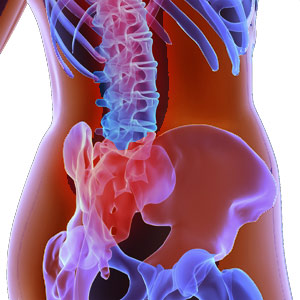Low Blood Pressure High Pulse

Blood pressure is the measurement of the pressure in the arteries when the heart contracts and relaxes. Categorized as high blood pressure and low blood pressure these are rather considered as physiologic state than a disease.
Low blood pressure or Hypotension is a normal condition provided the body function is normal too. However, experts opine that low blood pressure is life threatening in certain cases. Hypotension is not indicative in many cases and is often believed to develop with shock. The general symptoms of low blood pressure include nausea, dizziness, loss of balance, lightheadedness, headaches, shortness of breath, chest pain, rapid heart rate and pale skin.
Low blood pressure ranges
Blood pressure is directly linked to life signs
like heartbeat, rate of breathing and temperature. Hence, one needs to be very
careful with blood pressure levels. Blood pressure indicates the pressure of
arteries during the acting and resting phases of heartbeat. It is generally
expressed in two forms namely systolic and diastolic. For instance, a blood
pressure is indicated as 120/80, where 120 indicates the systolic blood
pressure and 80 the diastolic blood pressure.
Systolic blood pressure indicates the amount of pressure generated by heart while pumping blood through arteries to other parts of the body. (contraction of the heart)
Diastolic blood pressure represents the amount of pressure in the arteries during the rest between the beats of your heart. (relaxation of the heart)
Guidelines suggest that the normal blood pressure range is 120 / 80, however many experts consider 115/75 as optimal though. In general, it is very hard to quantify low blood pressure.
However, few experts opine that a reading lower than 90 systolic or 60 diastolic as low blood pressure levels. You might have low blood pressure even if you have only one lower range reading amongst systolic or diastolic. If your blood pressure reads 115/50, you are considered to have lower blood pressure.
Types of low blood pressure
Postural or Orthostatic hypotension: Most people develop sudden drop in their blood pressure when standing up from a sitting posture or lying posture. When you stand up, blood pools in your extremities like legs which is compensated by increased heart rate. However, this mechanism does not work in people with postural hypotension. They will have a sudden fall of blood pressure leading to dizziness, lightheadedness, blurred vision and even fainting. Causes for postural hypotension include dehydration, prolonged bed rest, pregnancy, diabetes, burns, excessive heat, large varicose veins and certain neurological disorders. Postural hypotension is most common in people over 65; however, it appears among young as well.
Multiple System atrophy with orthostatic hypotension: Certain people have low blood pressure due to nervous system damage. Referred as Shy-Drager syndrome, this condition is developed when the autonomic nervous system fails. There is no cure to multiple system atrophy and is proved fatal within 7 to 10 years of diagnosis.
Postprandial Hypotension: Few people, especially adults feel a sudden drop in their blood pressure after eating. In people with such condition, gravity pulls the blood towards the feet. In general, our body counteracts this action by increased heart rate and constricting blood vessels.People with Parkinson's disease or autonomic hypotension disorders are prone to develop postprandial hypotension.
Neurally mediated Hypotension:This condition occurs when you stand for long hours. It is developed due to the miscommunication between the heart and the brain. Usually when you stand for long hours, blood is pooled towards the legs and the body counteracts this by normalizing the blood pressure. However, in people with neurally mediated hypotension, nerves in the heart's left ventricle signal the brain that the blood pressure is too high rather than too low. As a result, the brain lessens the heart rate, further decreasing the blood pressure. This condition is usually found among young ones though is normal with aged people too.
Concurrently, if you have low blood pressure and your pulse rate is high then you are in danger. Because, when the heart beats faster, pumping becoming difficult thus reduces the flow of blood to other parts of the body. Seek immediate medical attention when your heart beats more than 83 times in a minute. However, remember it is common for your heart rate to increase after an exercise program or when you exert yourself in another way.
Risks of low blood pressure
In many cases, low blood pressure or hypotension is considered good especially for the fact that high blood pressure generates more pressure on the heart and the circulatory system. People with low blood pressure are at very lower risk of kidney disease and stroke.
However, experts opine that there are enough risks associated with low blood pressure. As the pressure of blood lowers through the arteries, certain organs like brain and heart may not received sufficient blood resulting in dizziness, blackouts or lightheadedness.
Age plays a major role in low blood pressure. Elderly people who stand suddenly after eating are found to develop postprandial blood pressure. Children and younger adults often become prey to neurally mediated hypotension that appears because of the miscommunication between heart and the brain.
Certain high blood pressure medications are also found to decrease the blood pressure. Hence, take doctor's advice before you consume any over-the-counter high blood pressure medications. Few heart conditions and Parkinson's diseases might also put you at a greater risk of developing low blood pressure.
Low blood pressure and pregnancy
Pregnancy might be a cause for low blood pressure, since woman's circulatory system expands rapidly during the period.
This might cause the blood pressure to fall down. Doctors opine that during the
first 24 weeks of pregnancy, systolic pressure might drop by 5 to 10 points
while diastolic by 10 to 15 points. As a result, pregnant woman can feel
dizziness or might faint at times. Though dizziness and fainting are not too
serious in pregnancy, falling because of them might be a risk to the carrying
woman.
It is said that dehydration might lead to low blood pressure in pregnant woman. Consume lot of fluids like water or juice to increase the fluids in the body. Standing for long hours during pregnancy might lower the blood pressure in certain woman.
Low blood pressure treatment
Treatment is generally not required for lower blood pressure especially for asymptomatic hypotension cases. The treatment for symptomatic low blood pressure is generally decided based on the cause.
Alteration in diet practices may help you relieve the symptoms of low blood pressure. Adding sodium to your food that might relieve you from feeling dizzy. Dorsal Decubitus (lying on the back) is recommended in mild cases where the patient is still responsive. In this position the doctor might ask you to lift the legs which will increase venous return thus making blood flow available to other critical organs of the body.
Certain other home remedies and self-cure steps include
- Avoid caffeine
-
Drink lots of non-alcoholic fluids
-
Exercise regularly to promote blood flow
-
Be careful when rising from a bed or lying down.
When rising sit upright on the bed before you stand.
-
Elevate the head part of your bed by 5 to 20
degrees.
-
Avoid prolonged exposure to hot baths and spas.
Top of the Page: Low Blood Pressure High Pulse
Tags:#low blood pressure #low blood pressure problems #low blood pressure treatment #low blood pressure during pregnancy #low blood pressure high pulse #low blood pressure risks #low blood pressure ranges #hypotension causes #hypotension symptoms
Women's Heart Attack Symptoms
Women Heart Disease Statistics
Heart Disease Risk Calculator
Reverse Heart Disease
Ischemic Heart Disease
Framingham Heart Study Risk
Hypertension Primary Pulmonary
Low Blood Pressure High Pulse
Managing High Blood Pressure
Cholesterol Levels for Women
Endothelial Dysfunction
Other health topics in TargetWoman Women Health section:
General Women Health

Women Health Tips - Women Health - key to understanding your health ...
Cardiac Care
Women's Heart Attack Symptoms - Identify heart problems...
Skin Diseases
Stress Hives - Red itchy spots ...
Women Disorders
Endocrine Disorder - Play a key role in overall wellbeing ...
Women's Reproductive Health
Testosterone Cream for Women - Hormone replacement option ...
Pregnancy
Pregnancy - Regulate your lifestyle to accommodate the needs of pregnancy ...
Head and Face
Sinus Infection - Nearly 1 of every 7 Americans suffer from ....
Women and Bone Care

Slipped Disc - Prevent injury, reduce pain ...
Menstrual Disorders
Enlarged Uterus - Uterus larger than normal size ...
Female Urinary Problems
Bladder Problems in Women - Treatable and curable ...
Gastrointestinal Disorders
Causes of Stomach Ulcers - Burning feeling in the gut ...
Respiratory Disorders
Lung function Test - How well do you breathe ...
Sleep Management

Insomnia and Weight Gain - Sleep it off ...
Psychological Disorders in Women
Mood swings and women - Not going crazy ...
Supplements for Women
Women's Vitamins - Wellness needs...
Natural Remedies

Natural Diuretic - Flush out toxins ...
Alternative Therapy
Acupuncture Point - Feel the pins and needles ...
Top of the Page: Low Blood Pressure High Pulse
Popularity Index: 101,205

